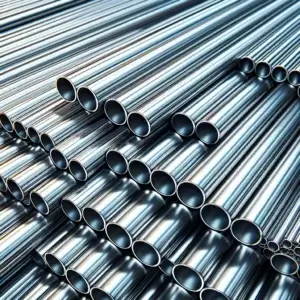
Material Selection: Beyond the Bend in Tube Fabrication
Metal tube bending is a fundamental process that finds commonality in an array of industries, ranging from furniture design to heavy-duty equipment, electric motorcycles and ATVs. While the specific applications may vary widely, the importance of material selection in tube bending remains a unifying theme.
Why Material Selection Matters
 The choice of materials significantly impacts the functionality, durability, and aesthetics of the final product. Whether it’s crafting an elegant chair frame, constructing robust industrial machinery, or engineering the frame of an all-terrain vehicle or electric motorcycle for optimum performance, understanding the significance of material choices is crucial in achieving success.
The choice of materials significantly impacts the functionality, durability, and aesthetics of the final product. Whether it’s crafting an elegant chair frame, constructing robust industrial machinery, or engineering the frame of an all-terrain vehicle or electric motorcycle for optimum performance, understanding the significance of material choices is crucial in achieving success.
Consider these factors when deciding what material is right for your project:
1. Mechanical Properties
Different materials have varying mechanical properties, such as tensile strength, elasticity, and hardness.
These properties directly affect the tube bending process. Selecting materials with the appropriate mechanical properties for your specific application is crucial.
Ductility:
Ductility refers to a material’s ability to undergo plastic deformation without breaking or cracking. It plays a crucial role in determining the degree to which a metal tube can be bent before failure occurs.
Materials with high ductility, such as aluminum, are easier to bend without causing defects or fractures.
In contrast, materials with low ductility, like high-strength steels, require special considerations to avoid cracking during bending.
Hardness:
Hardness is another critical factor that influences the variation in metal tube bending. Harder materials, such as hardened steel alloys, offer greater resistance to deformation.
Bending such materials may require higher bending forces and specialized tooling to avoid surface imperfections and cracking.
On the other hand, softer materials, like annealed steel or aluminum, can be bent more easily with lower forces.
Elasticity:
Elasticity describes a material’s ability to return to its original shape after deformation. Materials with higher elasticity recover their shape more effectively, reducing the risk of residual deformation or springback after bending.
Properly accounting for the material’s elasticity is essential for achieving accurate and repeatable bend angles.
2. Corrosion Resistance
In environments where corrosion is a concern, material selection is of paramount importance. Choosing the right corrosion-resistant material can extend the lifespan of the tubing and ensure it remains structurally sound over time.
For instance, stainless steel is renowned for its excellent resistance to corrosion, making it a preferred choice in industries exposed to harsh conditions.
3. Heat Resistance
If your application involves exposure to high temperatures, material selection is critical to ensure the tube can withstand thermal stresses without deformation or failure.
4. Weight and Cost Considerations
 In many cases, the weight of the tubing and the cost of materials are significant factors. Selecting materials with the appropriate strength-to-weight ratio can lead to cost savings without sacrificing performance.
In many cases, the weight of the tubing and the cost of materials are significant factors. Selecting materials with the appropriate strength-to-weight ratio can lead to cost savings without sacrificing performance.
Aluminum, for instance, offers a favorable balance of strength and weight, making it a cost-effective choice for certain applications.
5. Compliance with Industry Standards
Different industries have specific standards and regulations that dictate the type of materials that can be used. Compliance with these standards is not only essential for safety but also for meeting industry requirements and avoiding legal issues.
Making the Right Material Selection
Selecting the right material for your tube bending project involves careful consideration of the following steps:
- Define Your Project Requirements: Start by clearly defining the requirements of your project, including mechanical properties, environmental conditions, and regulatory compliance.
- Consult with Experts: Seek advice from tube bending professionals like Leonhardt Manufacturing who can provide insights into the best materials for your specific application.
- Consider Cost-Efficiency: Balance the performance requirements with the cost of materials. Opt for materials that meet your needs while staying within your budget.
- Environmental Considerations: If your project operates in extreme conditions, consider the material’s resistance to corrosion, heat, and other environmental factors.
- Stay Updated: Keep abreast of industry trends and advancements in materials. New materials may offer better performance or cost-effectiveness for your project.
Material selection is a pivotal decision in any tube bending project. The right choice can significantly impact the quality, durability, and functionality of the final product, while the wrong choice can lead to performance issues, safety concerns, and increased costs.
By understanding the role of material selection and following the steps mentioned above, you can make informed decisions that ensure the success of your tube bending project.
At Leonhardt Manufacturing, we have the expertise to guide you in selecting the right materials for your specific needs, guaranteeing the quality and longevity of your tube bending projects. Contact us today with your project needs.